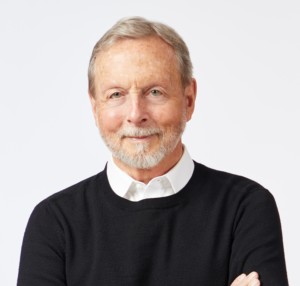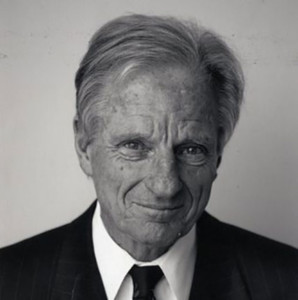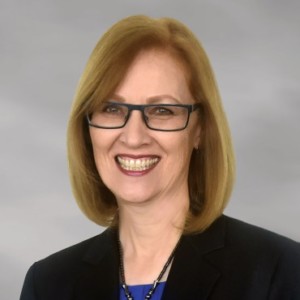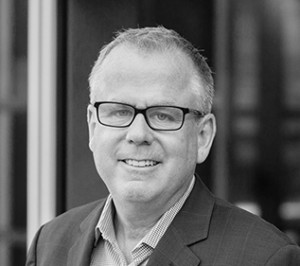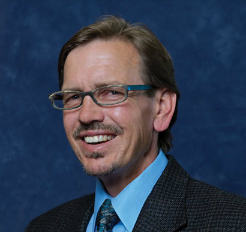
Welcome to your digital brochure for Architectural Bay Cruise: The Tale of Two Cities, hosted by AIA East Bay as part of AIA’s 2023 Conference on Architecture!
This page will give your further insight into the projects and places that our tour guides will be highlighting throughout the bay cruise, as well as some further reading if you’d like to learn more about a specific project or speaker.
Enjoy your day on the Bay!
Featured Stops
Treasure Island
Presenter: Craig Hartman, FAIA | SOM
SOM has created a bold new vision for Treasure Island, a 393-acre manmade island in the heart of the San Francisco Bay. Upon completion, the area will boast a diverse community with access to unprecedented open space, resource-conserving technologies, and a robust network of transportation options.
SOM’s vision drew fundamentally from sustainable principles and the powerful appeal of island life. The design proposes three compact neighborhoods organized around a town center and ferry terminal — a layout intended to encourage walking, bicycling, and using mass transit. Approximately 300 acres of the island will be set aside for open space, and all new landscaping will utilize native species.
Bay Bridge - East Span
Presenter: Donald MacDonald, FAIA | Donald MacDonald Architects
The San Francisco-Oakland Bay Bridge is one of the greatest American bridges. Built during the Great Depression, the bridge soon became known as the “working horse of Northern California,” carrying the heaviest traffic in the region.
Donald MacDonald Architects provided design services for the new San Francisco-Oakland Bay Bridge. Working with the acclaimed New York bridge engineering firm of Weidlinger Associates, the team designed and conceptualized various modifications on a self-anchoring suspension bridge concept, originally selected by an Engineering Design Advisory Panel. Weidlinger’s experience with steel suspension bridges proved very important in creating an aesthetic design of all the components of the bridge. The MacDonald/Weidlinger team also worked with the joint venture of T.Y. Lin International/Moffats & Nichol to create a signature bridge for the San Francisco Bay.
The MacDonald/Weidlinger design team developed ten self-anchoring suspension conceptual bridge designs, different tower structures, cabling systems, and deck profiles. These concepts were tested for structural integrity and aesthetics. Models, architectural renderings done by hand and computers, and structural analysis all played a part in the final winning design.
Port of Oakland
Presenter: Marylyn Sandifur | Port of Oakland
Since their founding in 1927 the Oakland Seaport has served as the principle ocean gateway for international containerized cargo shipments in Northern California. The Oakland Seaport oversee 1,300 acres of maritime-related facilities serving a local market of over 14.5 million consumers, 34 million within a seven-hour drive and 50% of the US population by rail.
Three container terminals and two intermodal rail facilities serve the Oakland waterfront. All shipping channels and 90% of berths at the Port are dredged to -50 feet, capable of accommodating vessels up to 18,000 TEU capacity. The Union Pacific and BNSF railroad facilities are located adjacent to the heart of the marine terminal area to provide a reliable and efficient movement of cargo between the marine terminals or transload facilities and the intermodal rail facilities.
Howard Terminal
Presenter: Marylyn Sandifur | Port of Oakland
The project site consists of approximately 55 acres that comprise the Charles P. Howard Terminal and adjacent parcels, located at the Port of Oakland along the Inner Harbor of the Oakland-Alameda Estuary. The site is bound generally by the Oakland Estuary Middle Harbor on the south; Jack London Square on the east; Union Pacific railroad tracks and Embarcadero West on the north; and the heavy metal recycling center, Schnitzer Steel, on the west.
The ballpark would be situated on The Oakland Estuary adjacent to the Port’s Jack London Square entertainment district at the Howard Terminal site. Howard Terminal is currently one of six marine terminals at the Port of Oakland. It was last used for container cargo operations in 2013. The terminal is currently used for vessel berthing, truck and container parking and depot operations, training of longshore workers and other logistics services that support Port operations. The 50-acre site is separated from any adjacent Port-owned maritime terminal acreage by Schnitzer Steel, a metal recycling operation. Here’s a map showing the Port of Oakland seaport with Howard Terminal in the southeastern corner.
Brooklyn Basin
Presenter: Robert Collins | TCA Architects
Parcel G is the gateway site into the Brooklyn Basin master plan located at Embarcadero and Brooklyn Basin Way. Containing 356 units, 500 parking spaces and over 40,000 sf of retail, the building will become an anchor for the community. On Brooklyn Basin Way, retail takes priority with grand corners, multiple facades, deep recesses and rich materials to breakdown the street wall into a pleasant pedestrian environment. New bike lanes help to activate the street and connect residents to the rest of Oakland. The building also has multiple breaks; step downs and set backs to help scale down the size of the project, while large courtyards and roof decks provide ample outdoor space as well with terraces for the residents. Facing the freeway, the nautical theme is played up with dramatic angles reminiscent of a ships bow which landmarks the entire Brooklyn Basin master plan.
Brooklyn Basin Parcel H is located at Brooklyn Basin Way and 8th Avenue and consists of a mix use building with 380 units and approximately 24,000 SF of retail. The design breaks the development into two “buildings”. A “neighborhood building” that is anchored within the surrounding Brooklyn Basin Master Plan, and a “gateway building”, which faces Oakland Estuary and the Bay Area beyond. The neighborhood building mass is broken down into smaller components horizontally and vertically, while the gateway building, taking its cues from the nearby container ships, is a big scale singular gesture with a unique set of materials and color. Spatially, the building’s internal open space is connected to the water via a large cutout, which acts to bring the world of the estuary into the core of the development.
Read more about Brooklyn Basin – Parcel G and Brooklyn Basin – Parcel H.
BART (Bay Area Rapid Transit) Transbay Tube
Presenter: Robert Raburn | Bay Area Rapid Transit
The Transbay Tube is an underwater rail tunnel that carries Bay Area Rapid Transit’s four transbay lines under San Francisco Bay between the cities of San Francisco and Oakland in California. The tube is 3.8 miles (6.1 km) long, and attaches to twin bored tunnels, The tube has a maximum depth of 135 feet (41 m) below sea level.
Built using the immersed tube technique, the Transbay tube was constructed on land in 57 sections, transported to the site, and then submerged and fastened to the bottom – primarily by packing its sides with sand and gravel. Construction of the giant five-story-high stations beneath Market Street and the tunnels themselves, was accomplished under extremely difficult conditions imposed by the high water table in downtown San Francisco, plus an incredible maze of underground utilities installed over the last 100 years. The first tunneling in the western U.S. done entirely under compressed air conditions, the project produced a succession of “firsts” in constructing the subway and stations in a difficult mud and water environment.
Mission Rock
Presenter: Kristen Hall | Kristen Hall City Design
Mission Rock will be a new 28-acre mixed-used neighborhood consisting of 8 acres of new public open space, 1,500 new rental homes with 40% affordable to low and middle income families, 2 million square feet of office/R&D, and a curated mix of small, local retail shops and cafes. The project will also include sea level rise resilience to the year 2100, carbon-neutral operations, the adaptive reuse of the historic Pier 48, and improved public waterfront access. The San Francisco Giants and Tishman Speyer are the lead developers for the project and are working closely in a JV with the Port of San Francisco, who is the landowner. The first phase is nearly complete, and consists of four buildings and the 5-acre park. To create a dynamic and cohesive first phase, the developers brought MVRDV, Henning Larsen, Studio Gang, Work AC, Scape, and CMG together to design the buildings and spaces through a collaborative concept design effort. Visa is completing its tenant fit out of Building G anticipated to open in 2024, and The Canyon (Building A) is currently open for leasing.
Chase Center
Presenter: Barry Burbon, AIA, LEED AP | Gensler
Gensler collaborated with Manica Architecture and Kendall/Heaton Associates on the Chase Center, home of the NBA champions, Golden State Warriors. The 18,000-seat, 450,000 square foot arena is the anchor for an affiliated 11-acre, mixed-use entertainment district and Golden State Warriors at Mission Bay.
Primed for game day and entertainment events, a variety of spaces diversify the guest experience. Taking cues from hospitality and cinematic framing, public interior spaces including lobbies and concourses are the backdrop for art and sculptures on loan from SFMOMA. The range of premium areas include courtside suites, lounges, theater boxes, and a Skybar that engage attendees whether they’re watching the game or taking in views of the bay. Meanwhile, team spaces including locker rooms, an in-house training facility, and administrative spaces set the tone for players on and off game day.
Downtown San Francisco
Presenter: John King | The San Francisco Chronicle
The Manhattanization of San Francisco in the 1970s was a process of transformation of the city’s skyline. The construction of high-rise office towers and residential buildings led to a dramatic increase in the city’s population density. The process was accelerated by the development of new transportation infrastructure, including the BART system and the Golden Gate Bridge. The result was a more cosmopolitan and urbanized cityscape, with a much higher density of people and activity.
Some projects mentioned by John King today are the Salesforce Tower, 181 Fremont, Mira, 1 Steuart Lane, and the Ferry Building.

